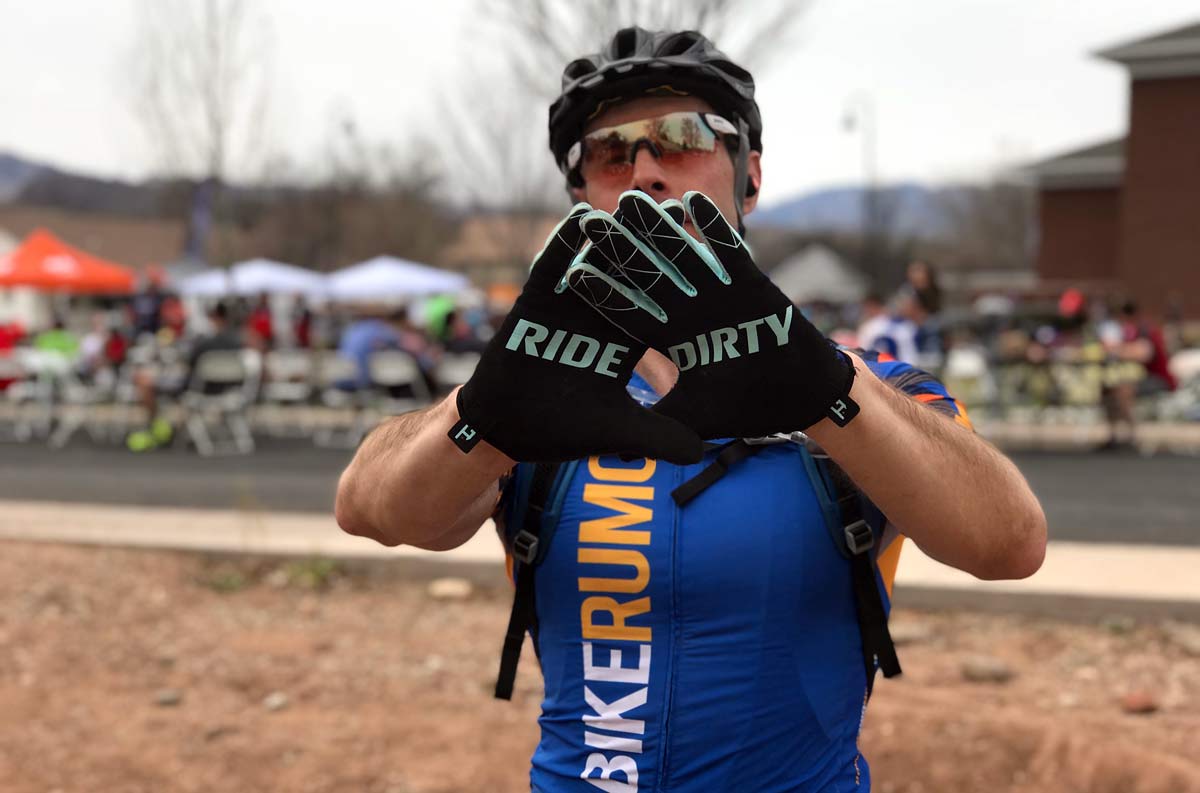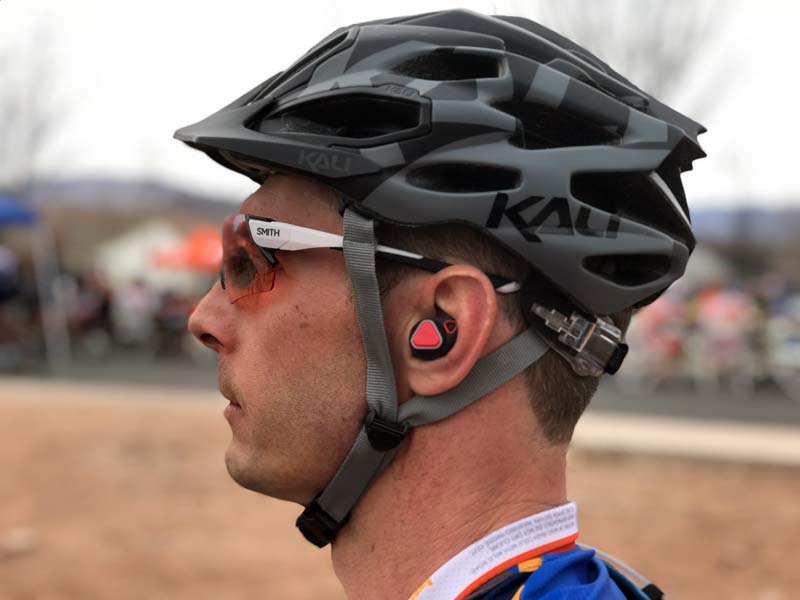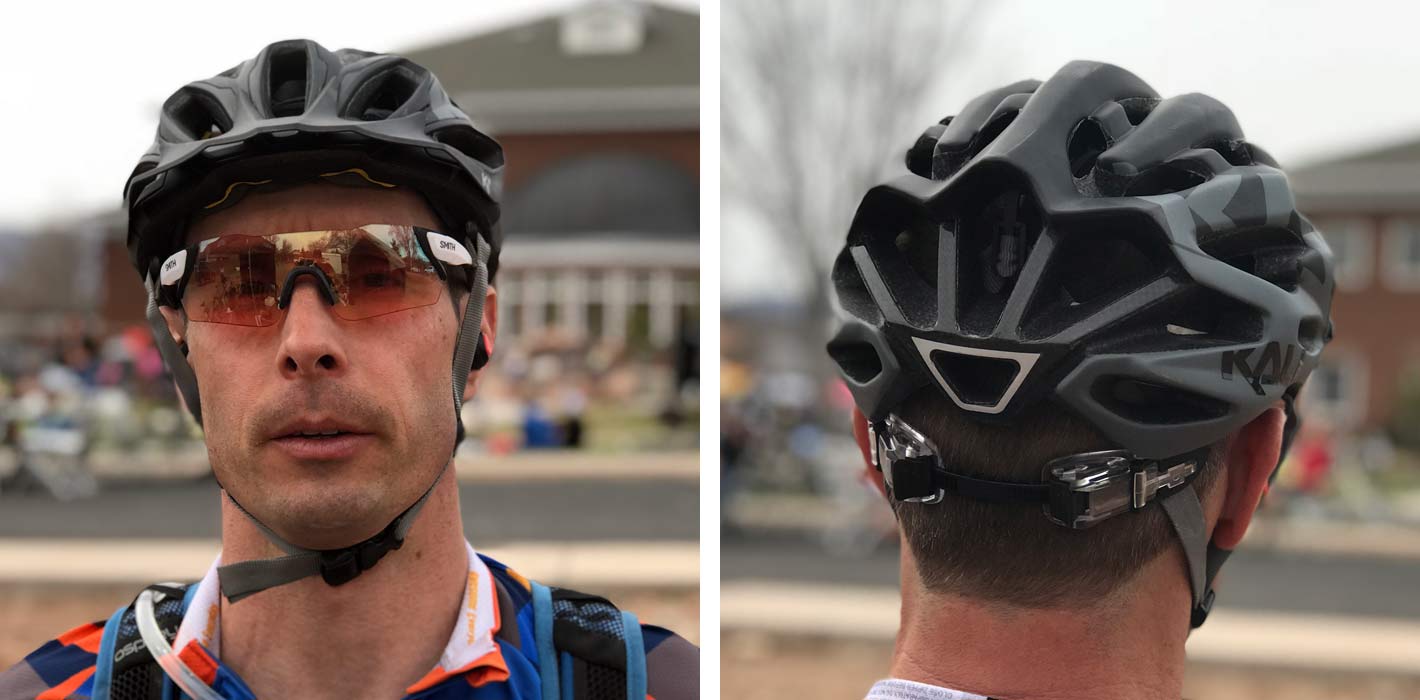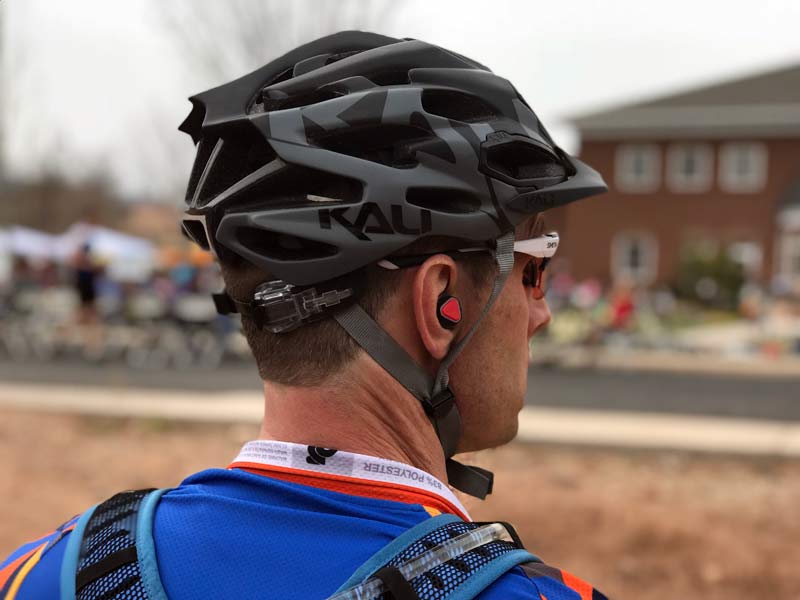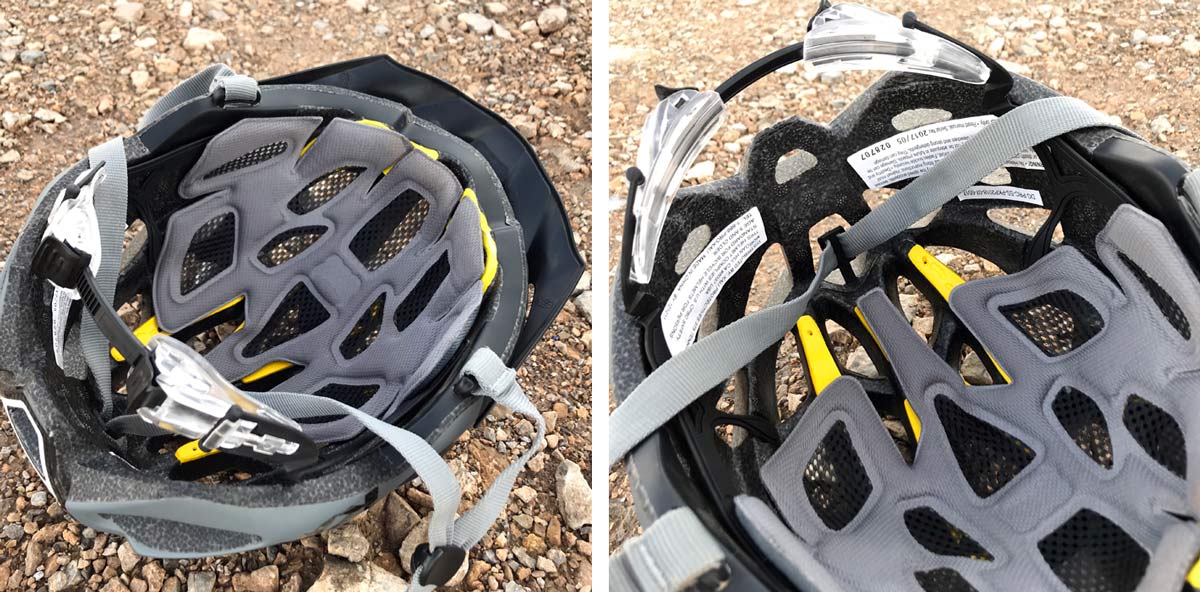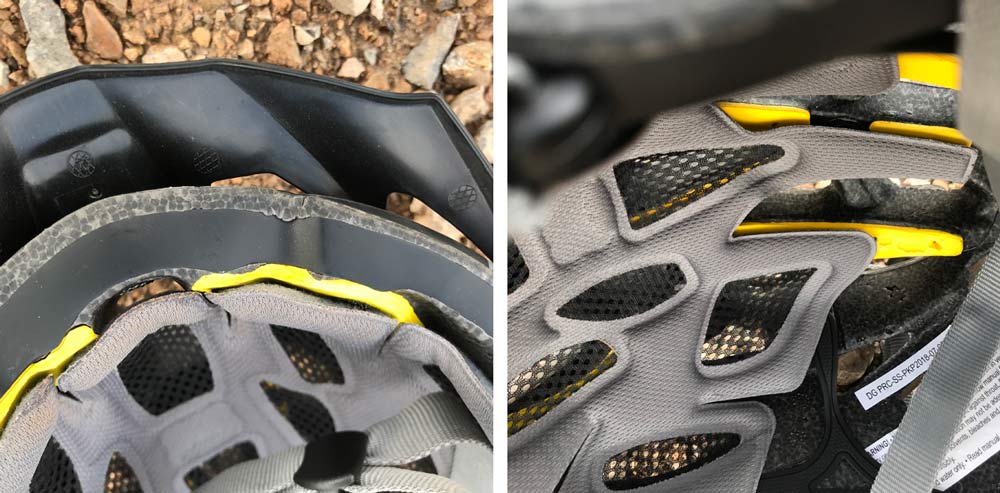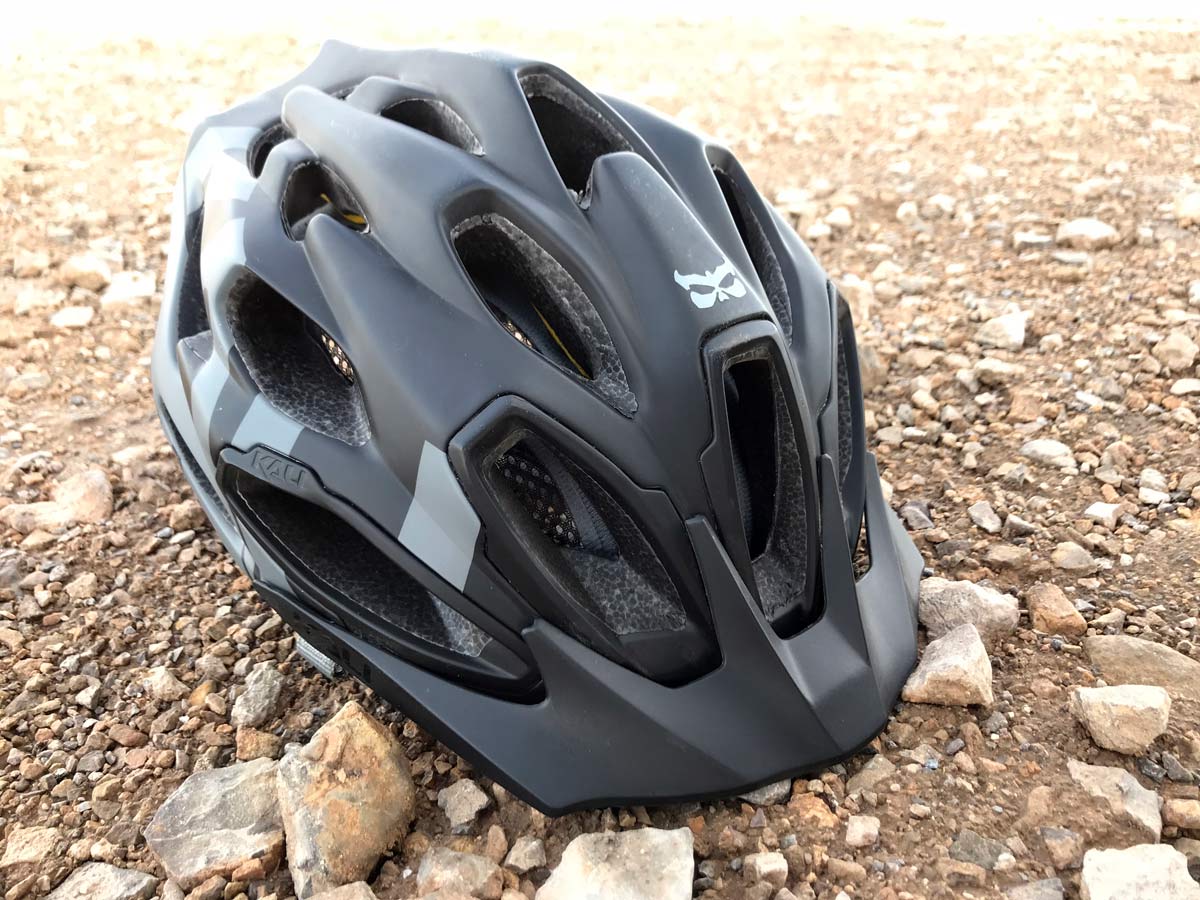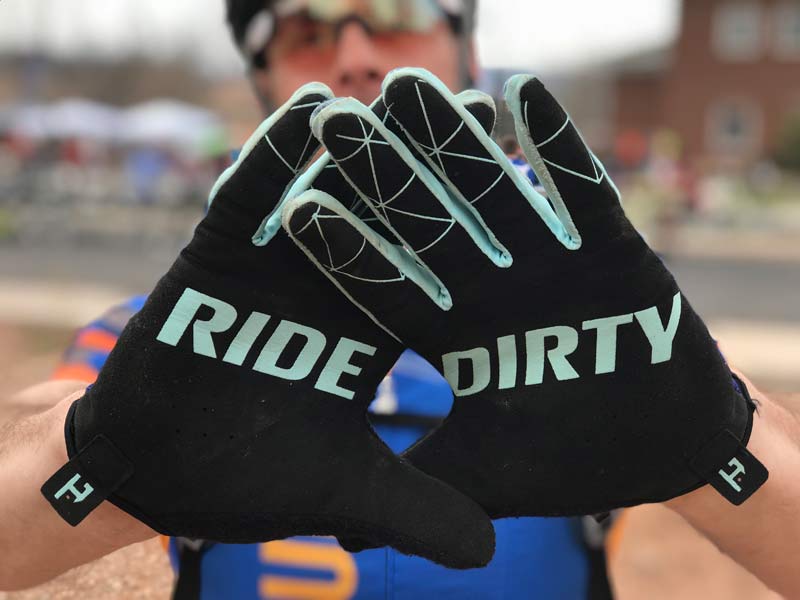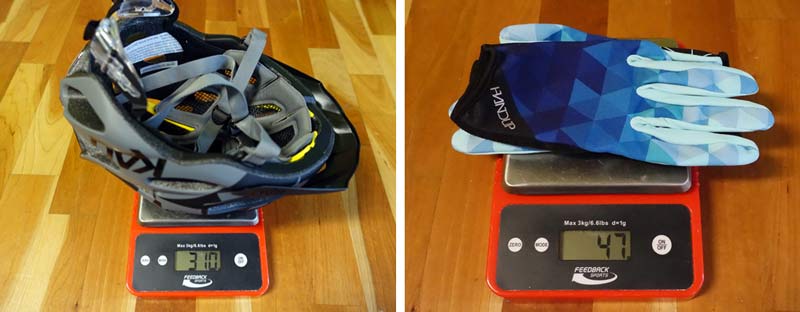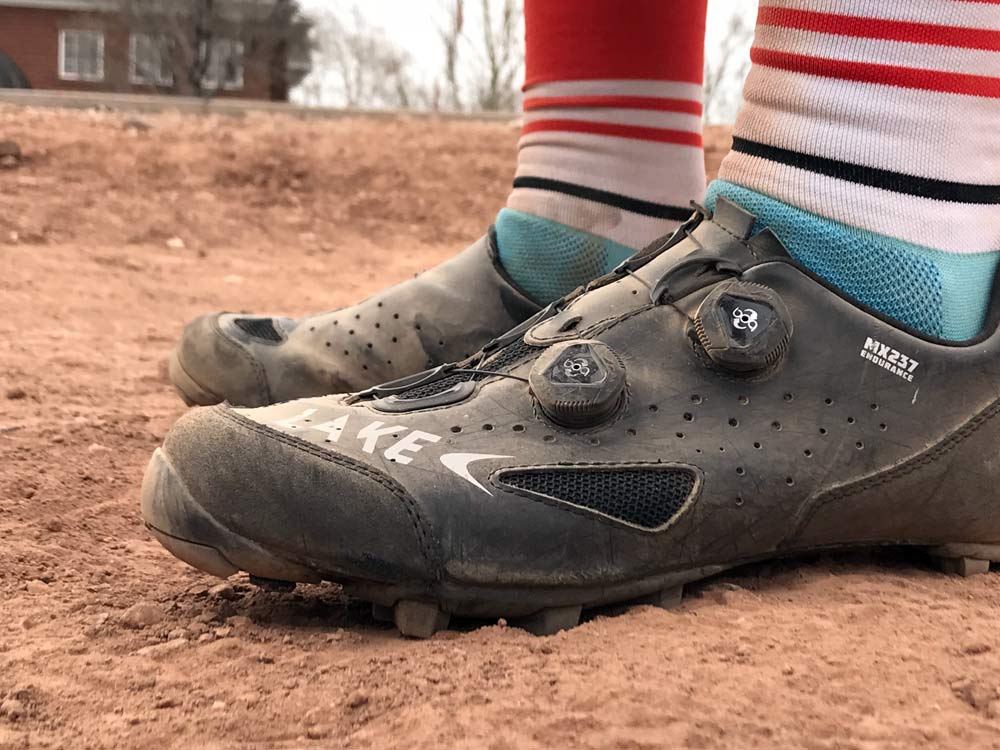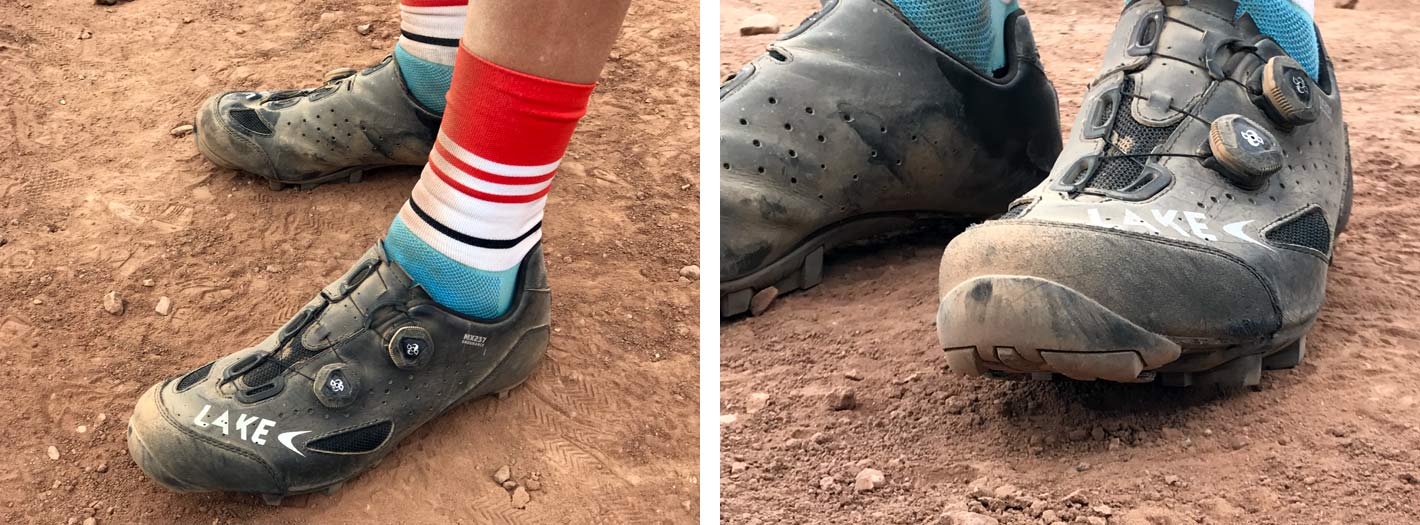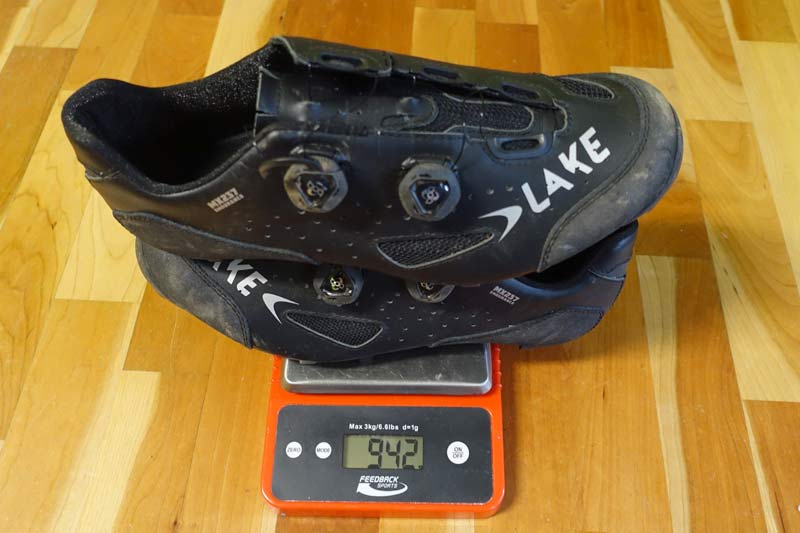The bike is one thing. Being comfortable and well protected is the other part of any mountain bike race, particularly one that could last half a day. For the 2018 True Grit Epic, I pulled in updated versions of some of my favorites to see how they’d hold up to three solid days of riding in Utah’s deserts and rocks.
KALI MARAKA HELMET
I’ve been wearing the Kali Maraka for years now, but never done a formal review. Here it is: This is a killer helmet, and combines all of their best technology into a reasonably light XC and trail worth helmet. We’ve interviewed Kali’s founder extensively about their safety tech and are continually impressed with their passion for saving brains. As they like to say, you don’t want to crash, but if you do, you wanna crash in a Kali helmet.
The Maraka uses large front and rear vent ports, with the former shaped to scoop air into it. Leaning towards the XC end of things, rear coverage isn’t as deep as their Lunati and other trail helmets, but remove the visor (or buy it without, ’cause it’s not really supposed to be removed) and it makes a sick looking gravel bike helmet, too.
Independent adjustment of the low-hanging retention mech and straps lets you dial in the fit. The forward strap mount sits outboard, meaning sunglasses are better worn under the helmet straps rather than over.
asfasdf
Standard safety features like an internal roll cage keeping it all together in a major impact and co-molded shell are all here. The real bonus features are their multi-density foam and “cone head” technology. The latter is hidden inside the EPS foam, using shaped layers of EPS to spread impact energy across a larger area. The unique one is the yellow low density foam positioned against your head. This absorbs some of the initial impact faster than the harder EPS will, giving you multistage protection. The whole idea is to slow down the impact as much as possible before it reaches your head – small changes can mean the difference between a concussion or just a hard knock.
The final safety feature is the Supervent reinforcements. Surrounding each of the five front vents are hard plastic parts. The idea is to spread impact to a larger area of foam, spreading forces to a larger area so they dissipate more of that energy before reaching your head.
Retail is $160, available in XS/S – S/M – M/L (tested). Actual weight below (with gloves photos). Check out all the colors and options at KaliProtectives.com.
Side note: The other items I’m wearing here are the new Smith Attack sunglasses and Axum Gear Bluetooth earbuds, both of which will be reviewed separately.
HANDUP GLOVES
Ever since meeting them at CX Nats two years ago, I’ve been a fan of Handup Gloves. I used to like padded gloves on top of padded grips. But it’s hard to get the palm shape right and still have it wrap around a bar without bunching, and the more your add to it, the harder it seems to get. Handup founder Cody came from a moto background, and wanted something similarly simple for mountain biking and cyclocross. Throw in quality materials and construction, plus fun, vibrant design, and he’s on to something. The gloves are comfortable, have adequate nose wipe terry coverage on the thumb and good grip thanks to silicone graphics on the palm and fingertips.
The one downside is they’re not very friendly with touch screens. It’s hit or miss even trying to swipe an iPhone over to the camera screen…mostly miss. This is the one improvement I’d like to see them make.
Actual weights for the Kali Maraka is 310g and Handup gloves are 47g per pair for XL. Check the numerous designs and colors, plus their fleece-lined winter versions, at HandupGloves.com.
LAKE MX237 ENDURANCE MTB SHOES
We’re kinda big fans of Lake Cycling shoes here at Bikerumor, and for good reason. They’re comfortable, well constructed, durable, and have an appropriately wide toe box. I reviewed the regular MX237 mountain bike shoes a few years ago and loved them. These newer MX237 Endurance models add a couple of key upgrades to improve longevity and performance. Both versions share the real rubber, aggressive tread blocks on the bottom, with nearly 100% coverage over the full carbon sole. This means excellent traction on nearly any surface, and protection for the sole.
The two main upgrades are the addition of Helcor leather panels on the heel and toe to improve abrasion resistance, and a “one way hook Lycra” heel lining to better secure your foot inside the heel cup. The former is layered on top of an already full-leather upper, and the latter replaces a leather heel cup liner on the standard MX237.
Actual weight for a pair of size 47 (US13) shoes was 942g, which is 26g heavier than the standard MX237. Both models use a dual BOA dial system that pops up to release. Retail for the MX237 Endurance is $319.99, and the regular MX237 is $299.
I’d ridden these a couple of times prior to heading to UT for the True Grit Epic, then three days of 2 to 5.5 hours in the saddle each. Race day was long, and with nearly constant pressure on the pedals to cover the miles, it was a true test of the shoes’ comfort. Lake has found the perfect balance of stiffness to comfort, marrying efficient pedaling with all-day comfort. While some XC race shoes sacrifice comfort for ultimate stiffness, these give you both. My feet didn’t hurt at all after three consecutive days of hard riding, the last two being on a nearly full rigid hardtail over countless rocks. There’s a reason I keep going back to my Lake shoes between the reviews. If you haven’t found the right cycling shoes yet, give them a look at LakeCycling.com.
